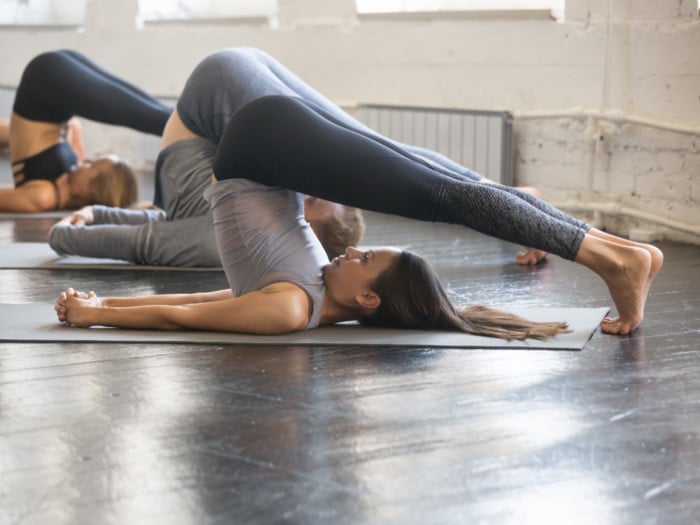Practicing yin yoga is a popular and effective way to increase flexibility and achieve internal harmony in your yoga practice.
What is Yin Yoga?
Yin yoga is a slower approach to traditional yoga, in which asanas or poses are held by the practitioner for longer periods of time. Instead of achieving a continuous flow, this yoga style focuses more on inner silence and the movement of energy through the body. Long-held poses in yin yoga may last for five minutes or more, rather than the 20-30 seconds commonly practiced in other yoga disciplines. The purpose of yin yoga is to increase the strength of connective tissues and boost flexibility while finding a balance between yin and yang – the opposing aspects of nature. [1] [2]

Yin Yoga Photo Credit: Shutterstock
Yin Yoga Poses
The main poses associated with yin yoga include meditation seat, seal pose, child’s pose, and banana pose, among others.
- Meditation Seat: For 6 minutes, ground yourself into a comfortable seat with a straight spine.
- Melting Heart: Keeping your hips above your knees, lean forward on your forearms and clasp your hands for 3-4 minutes.
- Seal Pose: On your belly, prop yourself up with your arms straight for 3-4 minutes.
- Child’s Pose: Kneeling with your buttocks on your feet, stretch your arms out and place your forehead on the ground for 5-6 minutes.
- Banana Pose or Bananasana: On your back, push your feet to one side of the mat, and your upper arms and shoulders to the same side. Form a crescent moon with your body and hold for 2-3 minutes on each side.
- Butterfly Pose: Draw your feet in from a seated position and lean forward slowly over your feet for 3-4 minutes.
Other poses include:
- Savasana
- Legs to chest transition
- Dragonfly pose
Yin Yoga Benefits
There are many benefits to the regular practice of yin yoga, that include the following:
- Relief from symptoms of anxiety and chronic stress [3] [4]
- Increase in flexibility
- Proper circulation to extremities of the body
- Boost to metabolism and core strength
- Detoxification of the body
- Strengthen the internal organs
- Encourages self-love and communication with your own body
- Boost to fortitude and stamina, both mentally and physically
- Improve joint mobility
- Release fascia
- Improve perseverance
- Promote afterglow
There is an almost meditative quality to this yoga style that is unique among many other popular types of yogic practices.
